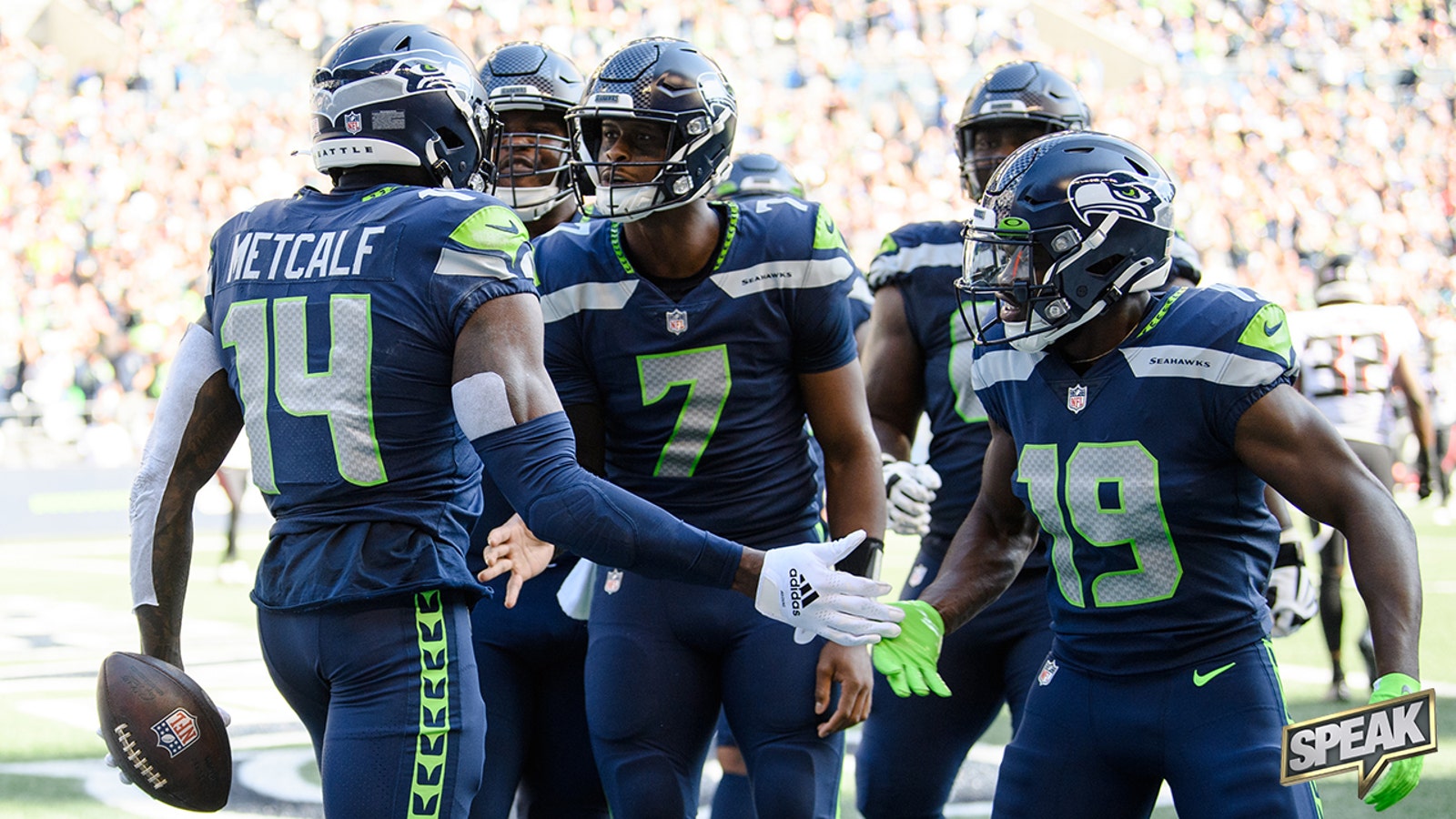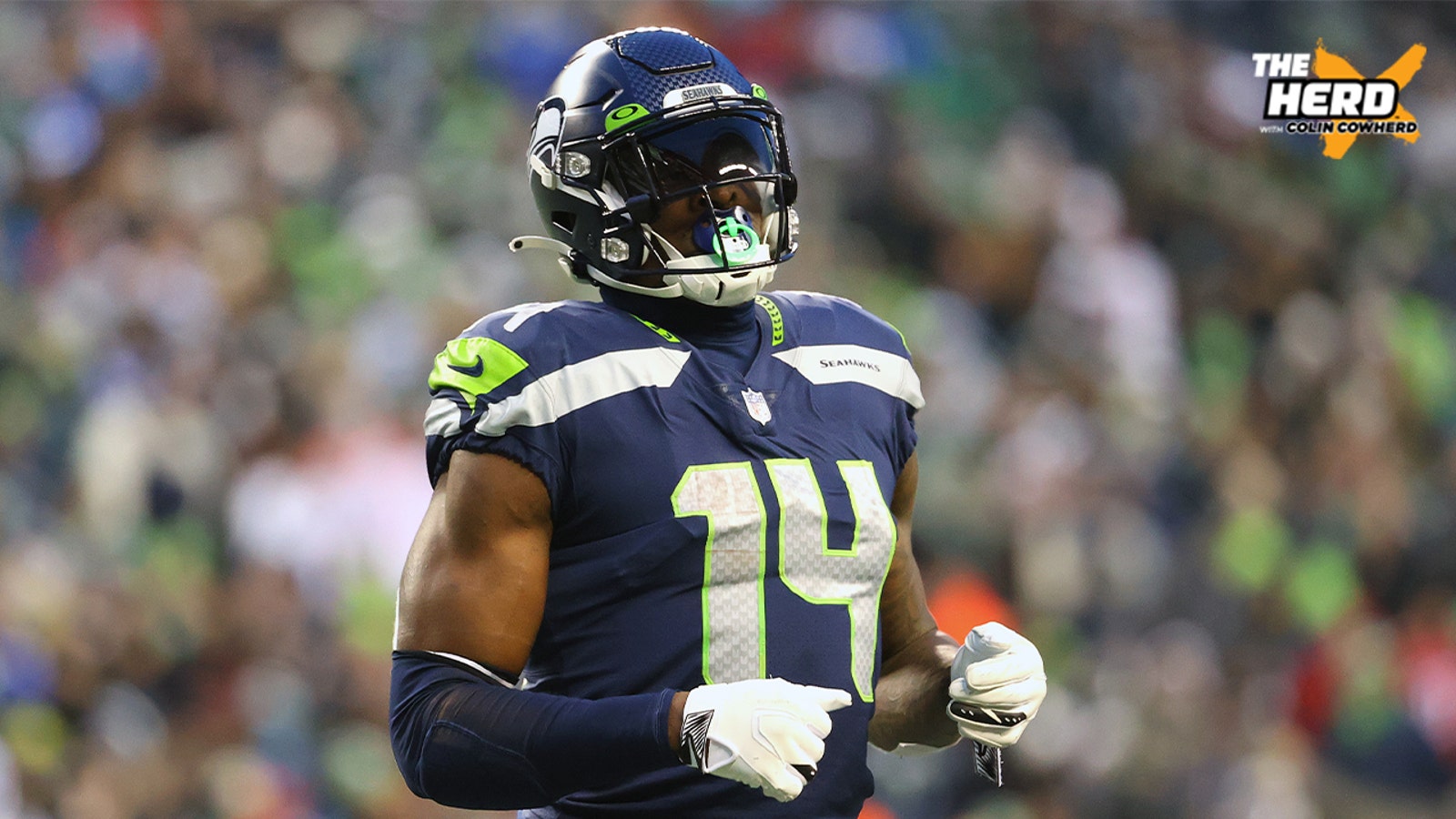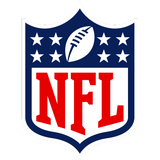Eric Williams
NFC West Writer
Which NFL teams have the best young cores? FOX Sports took a deep look at every team’s core of players drafted between 2019 and 2023 to ascertain which franchises have the most promising base of young talent. Our writers ranked all 32 individually, and the final result is an aggregate of all those lists. We’ll count them down for you before the start of the 2023 NFL season, starting with the worst (No. 32) all the way up to No. 1.
For a second straight year, the Seattle Seahawks appear to have hit the draft jackpot.
The Seahawks brought in another handful of young, talented players who should help them in their quest to overtake the NFC West division champion San Francisco 49ers.
“What’s intriguing is just the confidence Seattle had a year ago,” FOX Sports draft analyst Rob Rang said. “Especially with Pete Carroll at his age, going with two rookie tackles, even with Geno Smith there. And now everyone’s focusing on the two first-round picks. And for good reason.
“I think that Seattle has legitimized themselves as a real playoff contender. I still believe that they are a step behind the 49ers, though.”
Finding playmakers to help elevate Smith was at the top of general manager John Schneider and head coach Pete Carroll’s to-do list. They accomplished that in the draft by selecting Ohio State receiver Jaxon Smith-Njigba in the first round and UCLA running back Zach Charbonnet in the second round.
The Seahawks averaged 23.9 points per game, but just 20.7 points during the second half of the season.
“Smith-Njigba and Charbonnet are going to score touchdowns,” Rang said. “They are specifically brought in to help Seattle score more touchdowns, whether it be keeping Ken Walker III off the field, so he doesn’t get hurt, in a kind of Reggie Bush-Lendale White kind of situation. And with JSN (Smith-Njigba), his savviness as a route runner in the red zone is where he could stand out. So, if you’re looking for splash for Seattle, these rookies could make the same kind of immediate, splashy impact that last year’s rookies did.”
After unloading Russell Wilson in a trade to the Denver Broncos last year, the Seahawks netted the draft capital to remake the roster, getting back to Carroll’s winning formula of playing young players with a chip on their shoulders.
Last year’s draft included impact players in bookend tackles Charles Cross and Abe Lucas, cornerbacks Tariq Woolen and Coby Bryant, along with edge rusher Boye Mafe.
This year’s draft included No. 5 overall pick cornerback Devon Witherspoon and Smith-Njigba in the first round, along with Charbonnet, edge rusher Derick Hall and a diamond in the rough in undrafted rookie receiver Jake Bobo.
“When everyone counted them out after the Wilson trade, it allowed them to get back to what the essence of the program was — the competition and being the underdog,” FOX Sports NFL analyst Bucky Brooks said. “And then they really hit on what they were looking for. When I talk to people that are there, they’re big on instincts. Pete doesn’t necessarily care about size and all that stuff. He wants to know, ‘do you have the instincts to play?’
“The last two years they just have had really good players come in, and that’s why they’ve been able to get back to kind of the top of the food chain. They’re going to push the Niners. I don’t know if they can overtake them, but that rivalry will be interesting because I think they can go tit-for-tat.”
Seahawks listed amongst the ‘most overlooked’ teams entering the 2023 NFL season

Young core
WR DK Metcalf
CB Tariq Woolen
RB Ken Walker III
TE Noah Fant
CB Devon Witherspoon
S Coby Bryant
WR Jaxon Smith-Njigba
LT Charles Cross
RT Abe Lucas
Standout: DK Metcalf
The chiseled 6-4, 235-pound Metcalf brings track athlete athleticism to the football field. He’s been helped by the return of receivers coach Sanjay Lal from the Jacksonville Jaguars.
Metcalf played all 17 games last season, finishing with 90 receptions for 1,048 receiving yards and nine touchdowns on a career-high 141 targets.
Over the last three seasons, Metcalf has totaled 248 receptions for 3,318 receiving yards and 28 touchdowns. The Seahawks inked Metcalf to a three-year, $72 million deal last offseason, making him among the top-paid receivers in the NFL.
The 25-year-old checks the box for a big, physical receiver Carroll likes to have on the perimeter of his offense to help move the chains. But there’s still room for improvement.
“He’s a top athlete, but he’s an underachiever,” said one NFL Scout. “He gets hurt too often for a big guy. He’s a little bit stiff in his hips. I don’t see him run all the routes. I don’t know how they’re going to do it, but they need to challenge him.
“Now, is he one of the top players in the league? Absolutely. He’s got all those tools, but he doesn’t run the full route tree. So, is he a No. 1 receiver? Not right now. But who knows, the switch might come on for DK.”
Seahawks DK Metcalf says he is ‘the fastest player in the league’

Potential breakout: Devon Witherspoon
Somewhat of a surprise selection by the Seahawks at No. 5, the Illinois product could develop into a shutdown corner in the NFL.
“You can play him anywhere,” said one NFL Scout. “He can play nickel. He can play dime. You can play him on top. He can play in the box. They did a heck of a job with him at Illinois. We wanted him, but we weren’t in the range to get him. I think he’s going to play for 10 years.”
Witherspoon has been nursing a lingering hamstring injury but hopes to be ready for Week 1 of the regular season. The Seahawks have been auditioning Witherspoon as a slot defender, taking full advantage of his playmaking ability by putting him closer to all the action in the middle of the field.
“He was lightly recruited out of high school, but he is a real talented player,” Brooks said. “He’s really smart, really instinctive. He can play man, zone and do a bunch of different things. I think you put him in the secondary, which has also been upgraded with some age and experience and this team is ready to go.
“Even though we’re talking about some of the younger players, the whole fact that they got Julian Love and Jamal Adams comes back when he’s healthy. You’ve got Quandre Diggs. So, you now have what they have before, that makes them young and old, to get it going.”
Contract to consider: Noah Fant
Received as part of the trade that brought Wilson to Denver, the Seahawks picked up the fifth-year option on the former first-round selection. He’s in the final year of a rookie deal in which he will make $6.85 million in total compensation.
Fant was solid in his first season with the Seahawks, finishing with 50 receptions for 486 receiving yards and four scores. The Iowa product missed just one game in four NFL seasons.
The Seahawks signed tight end Will Dissly to a three-year, $24 million deal last offseason, so they clearly value the position.
According to Next Gen Stats, the Seahawks used two-tight-end sets 29.5% of the time, No. 3 in the NFL last season. Bringing back Fant in free agency could be a possibility next season if the price makes sense.
Key stats
- DK Metcalf is one of seven players in NFL history with at least 900 receiving yards and 50 receptions in each of his first four seasons (Terry McLaurin, Michael Thomas, Mike Evans, AJ Green, Randy Moss, Joey Galloway).
- Tariq Woolen’s 16 passes defended were the fourth-most among all cornerbacks last season. He led the NFL in interceptions with six.
- Devon Witherspoon recorded a coverage grade of 92.5 last season, best in the country. He was the No. 6-graded defender in the nation and No. 2 in Power 5, according to PFF.
- Kenneth Walker led all rookie running backs last season with 1,050 rush yds.
Inside info
Devon Witherspoon: “He’s a really good cover guy and he’s got size. … He got the man-to-man cover skills, and he’s got the speed. He’s an aggressive guy, he can cover and he can tackle. Those guys know what they’re doing, so I think he’s going to be a solid starter.” —NFL Scout
Jaxon Smith-Njigba: “He’s silky smooth and he catches everything. He’s only going to get stronger. And he’s only going to get better. Having Tyler Lockett in front of him is going to be a godsend. He’ll just soak up some knowledge from him. And when Lockett’s done, he’ll take over. They’ll miss Lockett, but not much because of him.” —NFL Scout
Jake Bobo: “He might have run a 4.9 (40-yard-dash time) coming out, but he’s got quick feet and quick hands. He doesn’t play 4.9. I wanted him at our place and got blown out of the water because he didn’t run fast enough. Usually, the longer-striding guys don’t get going until 20 yards down the field. But he’s got a huge catch radius and soft hands. And that makes up for that long-legged slowness. He’s got a chance to make the practice squad and be elevated to the active roster sometime during the season.” —NFL Scout
Abe Lucas: “Lucas is going to get better and better. I liked him coming out of Washington State. Kind of a different kid, but he fits in. And I think they’re going to find he’ll play awhile and have a really good career. Pair him with Charles Cross and I think they’re going to be fine up front.” —NFL Scout
Do you want more great stories delivered right to you? Here’s how you can create or log in to your FOX Sports account, follow your favorite leagues, teams and players and receive a personalized newsletter in your inbox daily.]
Eric D. Williams has reported on the NFL for more than a decade, covering the Los Angeles Rams for Sports Illustrated, the Los Angeles Chargers for ESPN and the Seattle Seahawks for the Tacoma News Tribune. Follow him on Twitter at @eric_d_williams.

Get more from National Football League Follow your favorites to get information about games, news and more























/cdn.vox-cdn.com/uploads/chorus_asset/file/25822586/STK169_ZUCKERBERG_MAGA_STKS491_CVIRGINIA_A.jpg)

/cdn.vox-cdn.com/uploads/chorus_asset/file/25821992/videoframe_720397.png)




